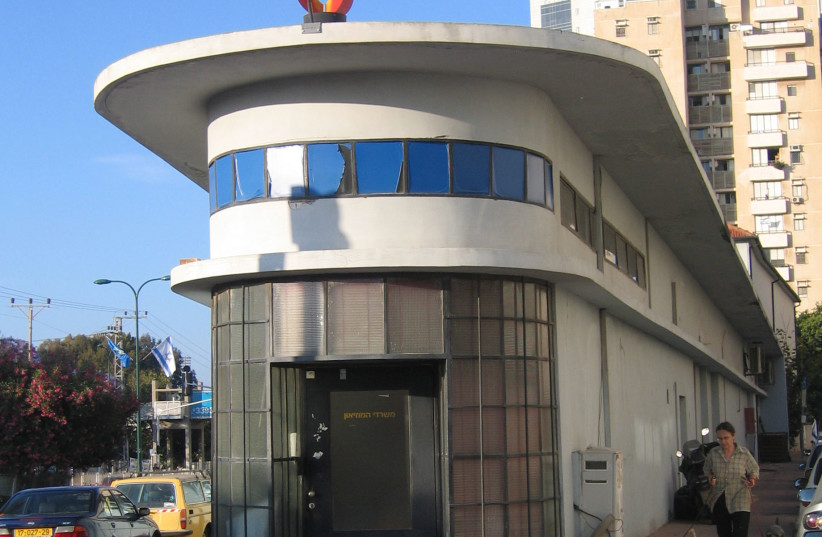Jewish-American painter Mark Rothko (Ohad Shahar) explodes with rage as he describes to his young assistant (Yechiam Berko) the hurt he feels when people describe his paintings as if they were eye candy. “It goes well with the sofa,” he taunts before screaming in frustration, “It’s cheaper than Pollock!”
In a country where art is not always treated with respect – witness Portrait of Maria Zetlin by Valentin Serov being sold off by Ramat Gan City Hall after it was unable to maintain its Russian art collection in good condition – one can only salute director Eliran Caspi for taking Red, the Tony Award-winning play by John Logan about an abstract painter, and bringing it here.
When Red was shown in London, the bald, glasses-wearing Rothko that Alfred Molina breathed life to on stage was nearly a devil, down to a cutting New York accent. Impossible to imitate in Hebrew, Shahar opts for a slightly fatigued learned Hebrew, which places Rothko within an urban, mostly Ashkenazi, milieu born with the State of Israel. His Rothko is a little more worn out around the edges but, when he confesses to feeling “too Jewish” at a posh restaurant – his pain feels genuine. Berko, who fills the shoes of Eddie Redmayne, is excellent as the youth who respects his elder, but also resents him for his selfishness and endless pontification.
What is the worth of an artist's efforts?
The play revolves around a key point in Rothko’s career. He was asked to paint murals for the Four Seasons restaurant in New York City in the late 1950s. If he does it, he will become one of the highest-paid artists of his time, but is this really what his artistic efforts are for? To serve as backdrops for wealthy diners?
In the UK, Rothko and his assistant paint. Here, red transparent plastic sheets are used instead. Berko and Shahar lift and arrange various stage lights as they work and cover them with colored papers as a theatrical action that replaces painting. They create color without splattering anything.

It is unclear why, if projections are used, that technical direction was not explored further.
A wordy play dripping with big names and descriptions from art history, the audience would only benefit, I think, from having The Dessert: Harmony in Red by Matisse shown when that painting is discussed on stage.
This would also put this production in dialogue with such crowd-pleasing exhibitions as Tomorrow at the Ramat Gan Museum of Art shown last year. In a theatrical work meant to introduce an artist to a larger audience, it is perfectly fine to offer the eye a glimpse of what the fuss is about.
In cinema, it is possible to present the eye with visuals on such magnitude that words and acting lose some of their importance. The 2000 film Pollock is a good example.
On stage, different rules apply and the eye needs to see drama and the ear to hear words. This is why plays like Copenhagen (Michael Frayn) or Best of Enemies (James Graham) – or this play – all use the same idea. Conflict between two people who care enough, about science, politics, or art, to push the other around. It is also interesting to note this seems to be a forte of British theater.
While this play, and the others mentioned, are highly effective theater pieces able to introduce a layperson to an important issue, one should not make the mistake of leaving the theater thinking one understood the art without seeing it.
The Rothko Chapel in Texas, for example, was recently placed on the same level as Solomon’s Temple by curator Sharon Toval during an interview. Viewers might use this illuminating production to begin their own artistic obsession.
Red will be shown on October 15 and 16 at 8 p.m. Tickets are NIS 75. 03-5611211.
